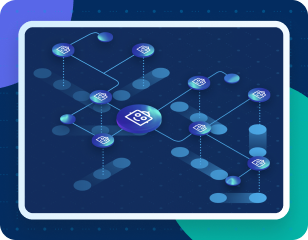Search Results for: Intro to Data Integration Patterns
Asynchronous Messaging Patterns
Asynchronous messaging enables applications to decouple from one another to improve performance, scalability, and reliability. This post will review the most common messaging patterns, along with why and when to use them.
Introducing the Anypoint Platform May 2019 release
To help organizations create and engage their ecosystems and succeed with API programs, MuleSoft is releasing Anypoint Platform May 2019 release, featuring the launch of Anypoint API Community Manager and Catalyst Mobilize.
Introducing Anypoint Platform Titan release
Earlier this month, at MuleSoft CONNECT 2018, we unveiled Titan, the next major release of Anypoint Platform. This release represents our most comprehensive Anypoint Platform release to date and marks a major milestone in our plan to help customers build flexible, secure, multi-cloud application networks. This release includes updates to the following components of Anypoint […]
Introducing API templates with reusable System and Process APIs
In today’s world, APIs are used to abstract the complexity of systems of records, to provide secure connectivity to the end systems, and to accomplish business goals such as creating a unified view of a customer. But APIs alone cannot accomplish all integration use cases. For example, when you want to send data from won […]
API-led connectivity and CQRS: How Mule supports traditional integration tasks
There is a lot of interest in how Mule supports emerging patterns like CQRS (Command Query Responsibility Segregation), so I wanted to create a series of blog posts discussing an insightful approach. Over the course of the series so far, we described the initial problem at hand and how to solve it using CQRS and […]
Introducing Pub/Sub Pattern for Anypoint Templates
Anypoint Templates showcase best practices around most common data integration patterns between two systems, for example, Salesforce and Workday, Salesforce and MS Dynamics CRM, Salesforce and NetSuite, Workday and ServiceNow and so on. With our new series of Pub/Sub templates, implemented using a publish/subscribe architecture, we are providing a more modularized approach to integration by […]
Intro: Salesforce to Database Anypoint Templates
I’d like to announce and introduce you to our second set of Anypoint Templates – Salesforce to Database. This set leverages the newly improved Database connector which allows you to connect with almost any JDBC relational database, consistently using the same interface for every case. Our first set of templates, Salesforce Org to Org integration, […]
Introducing Auto-Paging for Anypoint Connectors
Back in the old days when I used to write SaaS integration apps for living (long time ago, like 2 months back…) I always found it somehow difficult to reconcile large datasets with the Anypoint Cloud Connectors. Don’t get me wrong, I love those connectors! They solve a lot of issues for me, from actually […]
Integration Patterns: Content-based Routing
The implementation of the Enterprise Integration Patterns, first documented by Gregor Hohpe, is an important aspect of Mule. These patterns are accepted solutions to recurring problems within a given context and as such provide both a framework for both designing and building messaging and integration systems as well as a common language for teams to […]
Enrich your experience; Orchestration and Data Enrichment with Mule 3.1
One of the enterprise integration patterns that Mule hasn’t explicitly supported up until now is the “Content Enricher”. Enrichment has of course been possible but it hasn’t been as easy as it should have been. That’s changing for Mule 3.1 as we introduce support for message enrichment. Read on to learn what you can do […]




